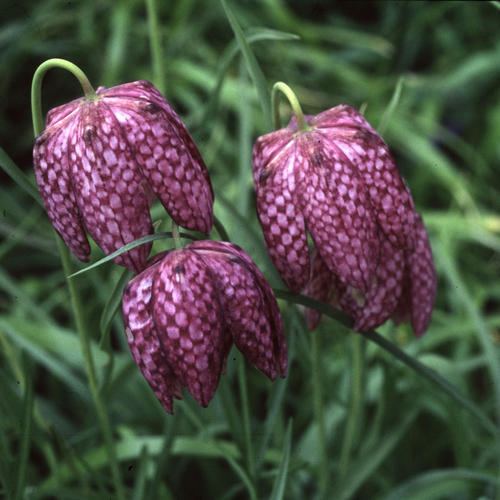Kingdom Plantae Subfamily Lilioideae Scientific name Fritillaria Rank Genus | Family Liliaceae Tribe Lilieae Higher classification Lilieae Order Liliales | |
 | ||
Lower classifications Fritillaria imperialis, Fritillaria meleagris, Fritillaria cirrhosa, Fritillaria persica, Kamchatka fritillary | ||
Growing fritillaria
Fritillaria is a genus of Eurasian, North African, and North American plants in the lily family.
Contents
- Growing fritillaria
- How to plant fritillaria meleagris jeff turner s advice on snakeshead fritillaria bulbs
- Description
- Uses
- Ecology
- Species
- References
There are about 100 to 130 species of bulbous plants in the family Liliaceae, native to temperate regions of the Northern Hemisphere, especially the Mediterranean, southwest Asia, and western North America. The name is derived from the Latin term for a dice-box (fritillus), and probably refers to the checkered pattern of the flowers of many species. Plants of the genus are known in English as fritillaries. Some North American species are called mission bells.
How to plant fritillaria meleagris jeff turner s advice on snakeshead fritillaria bulbs
Description

Fritillaries often have nodding, bell- or cup-shaped flowers, and the majority are spring-flowering. Certain species have flowers that emit disagreeable odors. The scent of Fritillaria imperialis has been called "rather nasty", while that of F. agrestis, known commonly as stink bells, is reminiscent of dog droppings. On the other hand, F. striata has a sweet fragrance.
Uses
Fritillaria extracts are used in traditional Chinese medicine under the name chuan bei mu, and in Latin, bulbus fritillariae cirrhosae. Species such as F. cirrhosa and F. verticillata are used in cough remedies. They are listed as chuān bèi (Chinese: 川貝/川贝) or zhè bèi (Chinese: 浙貝/浙贝), respectively, and are often in formulations combined with extracts of loquat (Eriobotrya japonica). Fritillaria verticillata bulbs are also traded as bèi mǔ or, in Kampō, baimo (Chinese/Kanji: 貝母, Katakana: バイモ). In one study fritillaria reduced airway inflammation by suppressing cytokines, histamines, and other compounds of inflammatory response.

Most fritillaries contain poisonous alkaloids such as imperialin; some may even be deadly if ingested in quantity. But the bulbs of a few species, such as F. affinis, F. camschatcensis, and F. pudica, are edible if prepared carefully. They were commonly eaten by indigenous peoples of the Pacific Northwest coast.

At least one species, F. assyrica, has a very large genome. With approximately 130,000,000,000 base pairs, it equals the largest known vertebrate animal genome known to date, that of the marbled lungfish (Protopterus aethiopicus), in size.
The emblematic and often unusually-colored fritillaries are commonly used as floral emblems. F. meleagris (snake's head fritillary) is the county flower of Oxfordshire, UK, and the provincial flower of Uppland, Sweden, where it is known as kungsängslilja ("Kungsängen lily"). In Croatia this species is known as kockavica, and the checkerboard pattern of its flowers may have inspired the šahovnica pattern on the nation's coat of arms. F. camschatcensis (Kamchatka fritillary) is the floral emblem of Ishikawa Prefecture and Obihiro City in Japan. Its Japanese name is kuroyuri (クロユリ), meaning "dark lily". F. tenella is the floral emblem of Giardino Botanico Alpino di Pietra Corva, a botanical garden in Italy.
Ecology
The scarlet lily beetle (Lilioceris lilii) eats fritillaries, and may become a pest where these plants are grown in gardens.
Species
Numerous names have been coined using the name Fritillaria but referring to species now considered better suited to other genera (Calochortus Disporum Erythronium Eucomis Lilium Notholirion). We provide links to help you find appropriate information.
